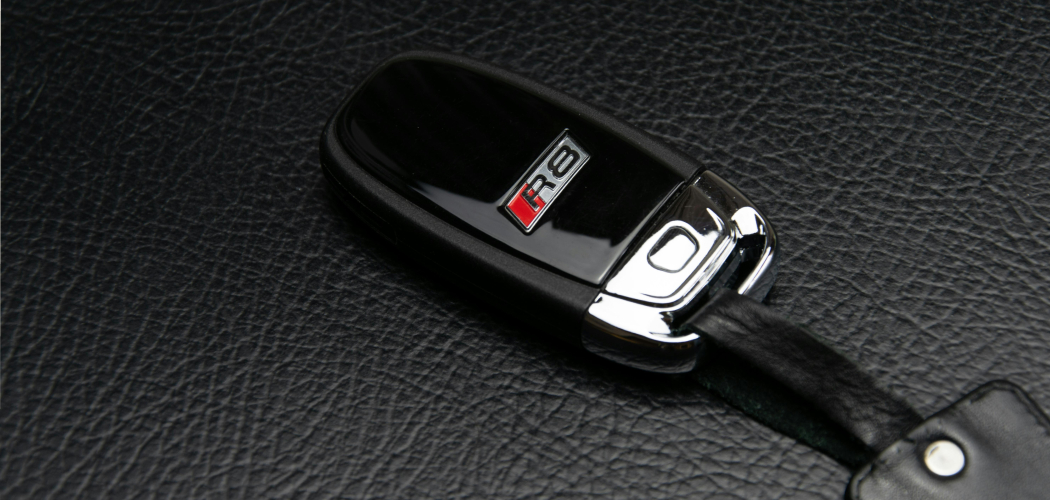Modern motorists depend on convenient and secure technologies to interact with their vehicles, and the humble key fob is a central component of this convenience. Understanding how to open an Audi key fob is a valuable skill for every Audi owner or user. Whether you’re replacing a dead battery, cleaning internal components, or troubleshooting a malfunction, it’s important to be able to access and handle the internals of your key fob with confidence.
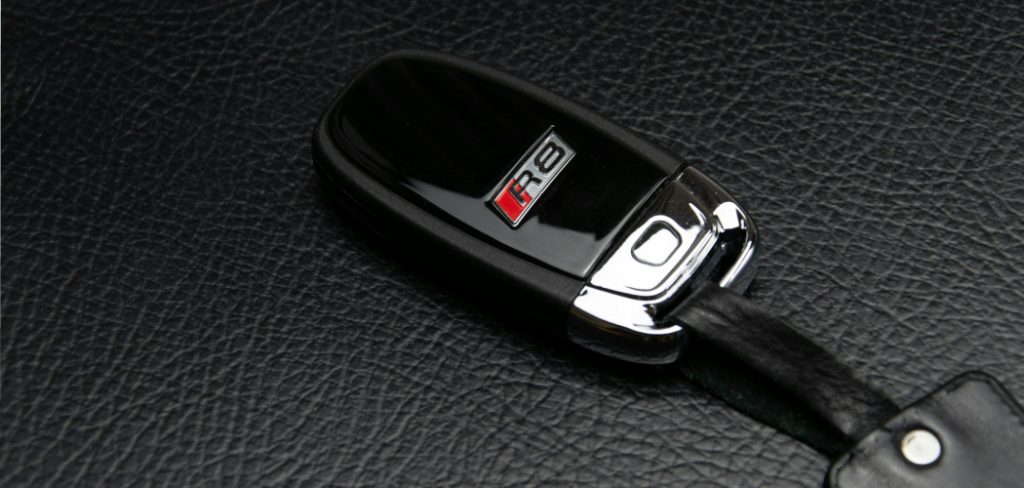
Thankfully, the process is straightforward with the right approach and tools. This comprehensive guide will equip you with step-by-step instructions and essential tips that make the task simple and stress-free. By learning how to open your Audi key fob properly, you not only save time and money but also help ensure that your car’s entry and ignition systems remain reliable and functional.
Overview of Audi Key Fobs
Audi key fobs are sophisticated, compact devices designed to make vehicle access effortless and secure. Over the years, Audi has developed several types of key fobs to adapt to advancing automotive technology and consumer needs.
Types of Audi Key Fobs
Basic Fobs: Early models generally included a physical key paired with electronic unlock buttons. The remote functions are limited—usually to locking, unlocking, and sometimes trunk release—but provide foundational security and functionality.
Smart Fobs: Modern Audis typically use smart or “keyless” fobs. These allow proximity unlocking, push-button start, and enhanced rolling code security, all without the need to take the fob out of your pocket or bag. Their internal systems are more advanced, making maintenance a bit more intricate but still manageable with care.
Common Uses and Importance
The key fob isn’t simply about convenience; it’s integral to the security and daily function of your vehicle. It’s responsible for enabling or restricting access and in many models, interacting with your vehicle’s immobilizer to enable ignition. Maintaining your key fob by keeping it functional extends both convenience and peace of mind.
Why You Might Need to Open an Audi Key Fob
Most Audi drivers will eventually need to open their key fob. While these gadgets are durable, everyday use can take its toll, triggering the need for basic maintenance or repairs.
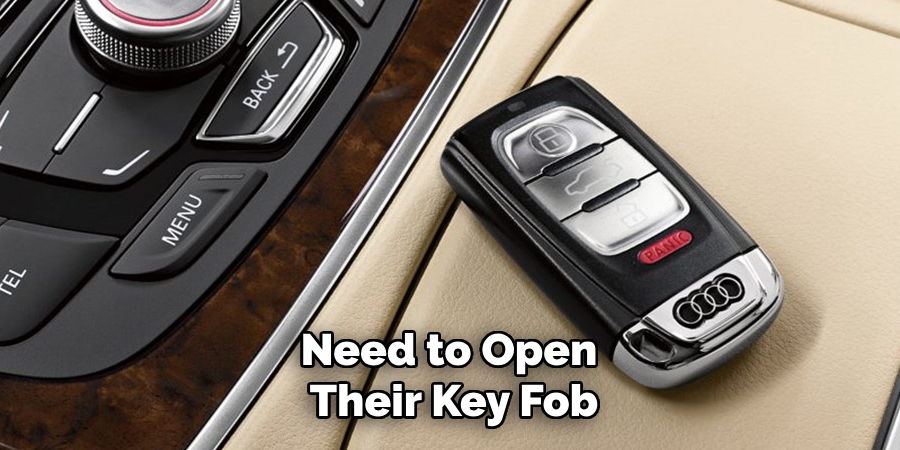
Replacing a Dead Battery
The primary reason for accessing your Audi key fob is to swap out a depleted battery. As with all battery-powered devices, the battery life eventually runs out, often at inconvenient moments.
Cleaning Internal Components
Key fobs, like any electronic device carried daily, can accumulate dust, dirt, or moisture. These can impede the circuit connections or the physical movement of buttons, causing inconsistent or unresponsive behavior.
Troubleshooting Malfunctions
Aside from battery issues, sometimes buttons stick, the fob gets dropped, or doesn’t seem to function correctly. Opening the key fob enables you to inspect for obvious physical faults, minor water damage, or issues that a quick cleaning or battery reset could resolve—potentially saving you a costly dealership visit.
Components of an Audi Key Fob
Being familiar with the parts inside your key fob can help prevent accidental damage and make the reassembly process much easier.
Outer Shell
The fob’s outer case is durable, designed to protect sensitive electronics from impacts and minor water contact. It typically snaps together with hidden seams and clips.

Battery
Most Audi key fobs use coin-style lithium batteries, like the CR2032. The exact type may vary depending on your model, but this type is very common for modern fobs.
Circuit Board
This is the “brain” of the fob, managing signals between the buttons and your vehicle’s receiver. It’s important to handle the circuit board with care—static discharge and moisture can damage it.
Seam and Clips
The shell is held together by seams and internal plastic clips, which can break if too much force is applied. Understanding their locations can help you open the case gently and avoid repairs.
Tools Needed to Open an Audi Key Fob
Before you begin, gather the right tools. This will help prevent accidental damage and make your task more efficient.
Essential Tools
A small flathead screwdriver or a sturdy coin (like a nickel or quarter) works perfectly for prying open the case. Some fobs can be opened with only your fingers, but a tool will make things easier, especially if the case is tightly fitted.
Optional Items
Disposable gloves are recommended if you want to keep your hands clean and avoid accidental static discharge. Microfiber cloths and a can of compressed air help clean inside the case without damaging components.
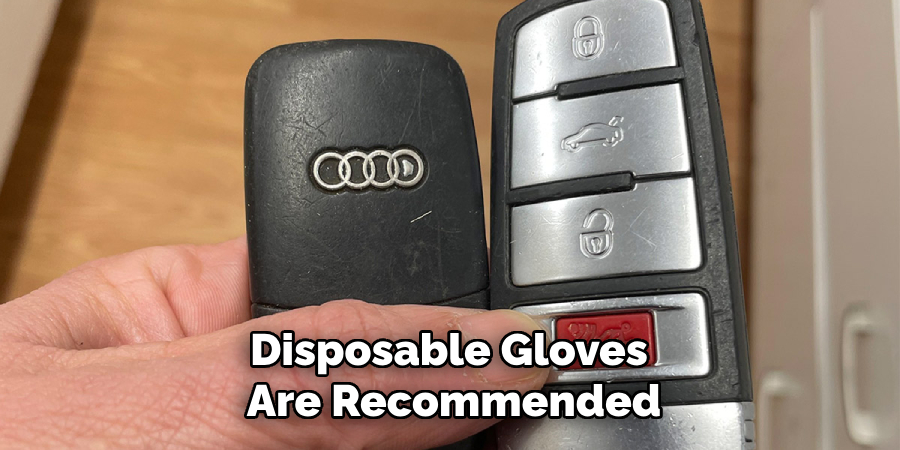
Step-by-Step Guide on How to Open an Audi Key Fob
This detailed guide will walk you through the steps to open your Audi key fob safely, minimizing the risk of damage and ensuring that you can proceed with whatever maintenance you have planned.
Locating the Key Fob’s Seam
First, examine the fob closely under bright light. The seam is typically where the two halves of the body meet, often running along the edge near the key ring or just beneath the buttons.
Tips for Positioning the Tool
Insert your flat screwdriver or coin gently into the seam. Pick a spot away from delicate areas like the button face or the Audi logo, which can scratch easily.
Using a Tool to Separate the Case
Press gently but firmly, twisting the tool to pry the two halves apart. If your fob has a release button for a physical key, remove the key first; this often exposes a better leverage point.
Step-by-Step Instructions
- Remove the physical valet key (if present) by pressing and sliding the release button.
- Insert your tool into the exposed slot or main seam.
- Twist gently to create a slight gap, then move along the seam, working it open a little at a time.
- Continue carefully until the case pops open.
Troubleshooting a Stuck Case
If the halves don’t separate easily, avoid forcing them. Some designs include hidden latches inside the seam, so inspect your fob and refer to your owner’s manual if needed.
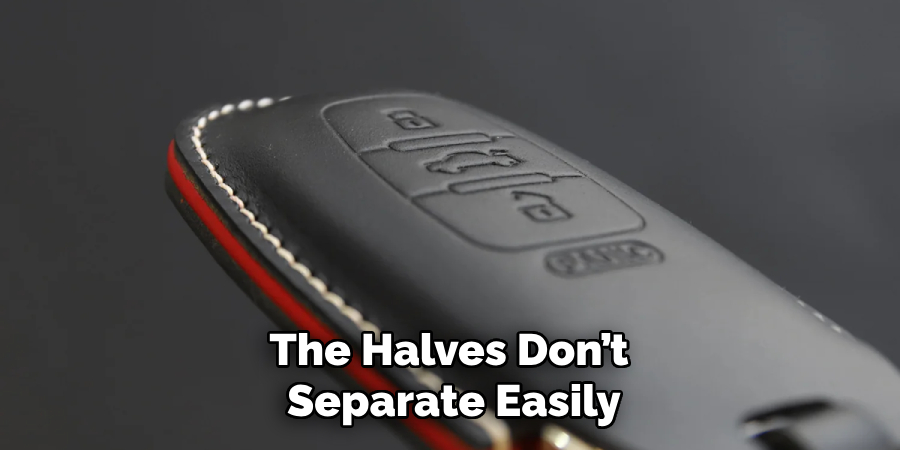
Accessing Internal Components
Once opened, note the position of the battery and circuit board. Lift components gently—never force them—using your tool or clean fingers.
Precautions While Handling
- Avoid touching circuitry directly with bare hands.
- Rest components on a clean, static-free cloth.
- Inspect for corrosion, debris, or broken plastic clips.
Identifying Damage
If you notice broken solder points or water damage (greenish or white corrosion on circuitry), consider seeking professional repair rather than attempting DIY fixes unless you have the expertise.
Replacing the Battery in an Audi Key Fob
Keeping your key fob battery fresh is essential for uninterrupted access to your vehicle, and it’s a straightforward task once the case is open.
Identifying Battery Type
Look at the surface of the installed battery for the numerical code (commonly CR2032 or CR2025). Verify the type matches the replacement battery you’ve purchased.
Ensuring Compatibility
Mismatched batteries can cause the fob to malfunction or fit improperly, so double-check before installation.
Proper Replacement Process
- Use your small screwdriver to gently pop out the old battery.
- Place the new battery in the same orientation (typically “+” side up).
- Avoid touching the battery faces; oils from your skin can reduce battery life.
Reassembling Your Audi Key Fob
Proper reassembly is vital for the continued integrity and operation of your key fob.
Aligning Components Properly
Position the circuit board and battery exactly as you found them. Most Audi key fobs include guides or raised plastic tabs to help with alignment.
Securing the Outer Case
Press the fob halves together until they snap securely. You should hear or feel a gentle “click” as the clips engage. Do not force the fit; if resistance is significant, open the case and ensure no components are misplaced or misaligned.

Common Mistakes to Avoid
Many key fob issues can be traced to mistakes made during opening or reassembly. Here are practical tips to prevent costly errors.
Forcing the Case Open
Never use excessive force—applying too much pressure can snap internal clips or crack the shell, compromising the fob’s water resistance and security.
Misplacing Internal Components
Always work over a clean, flat workspace. Components like the circuit board or tiny springs can easily be lost on cluttered surfaces.
Using Incorrect Tools
Improvised tools (like knives or pens) can deform the plastic or damage electronics. Always use an appropriate-sized flathead screwdriver or coin.
Testing the Key Fob After Reassembly
Check all functions to confirm the key fob works as intended before assuming the process is complete.
Functionality Check
- Press each button and watch for a response—your car should lock, unlock, and (if applicable) activate the trunk release.
- For keyless fobs, verify that the proximity entry and start functions operate normally.
Troubleshooting Issues Post-Reassembly
If your fob doesn’t work:
- Confirm that the battery is correctly installed and oriented.
- Check that all components are seated properly inside the case.
- Reopen the fob and try reseating the battery and circuit board.
If these steps don’t resolve the issue, refer to your vehicle’s manual for specific troubleshooting or consider seeking professional help.
Maintenance Tips for Audi Key Fobs
With simple ongoing care, you can prolong the life and reliability of your Audi key fob.
Regular Battery Checks
Plan to check your fob’s battery once a year, or whenever you notice reduced range or delayed response.
Protecting the Fob from Physical Damage
Invest in a protective cover to shield your key fob from drops, scratches, and moisture. Always store it in a safe place where it won’t be crushed or exposed to liquids.
Cleaning Tips
Clean the key fob exterior with a soft, damp cloth or a disinfectant wipe. Avoid soaking or allowing moisture inside the case. If you must clean inside, use a dry cloth, microfiber, or canned air—never water.
When to Seek Professional Help
Some problems are best handled by experts who have specialized tools and replacement parts.
Damaged Internal Components
If the circuit board shows visible damage, corrosion, or if soldered buttons become loose, it’s best to visit an Audi-certified technician or locksmith.
Persistent Malfunctions
Repeated battery failure or ongoing issues after reassembly often require diagnosis with specialized equipment. Authorized service centers can reprogram a fob or replace parts as needed.
Conclusion
Learning how to open an Audi key fob is a straightforward process that can save you time, trouble, and expense. By following the clear steps outlined in this guide, you ensure reliable access to your Audi while reducing the risk of avoidable damage. Regular maintenance—like battery checks, gentle cleaning, and prompt troubleshooting—can greatly extend the life of your key fob.
If you ever encounter persistent or complex issues, remember that professional assistance is there for you. Practice these skills confidently, and your Audi key fob will keep delivering the convenience and security you rely on every day. Mastering how to open an Audi key fob isn’t just a technical trick—it’s an essential part of smart vehicle ownership.

